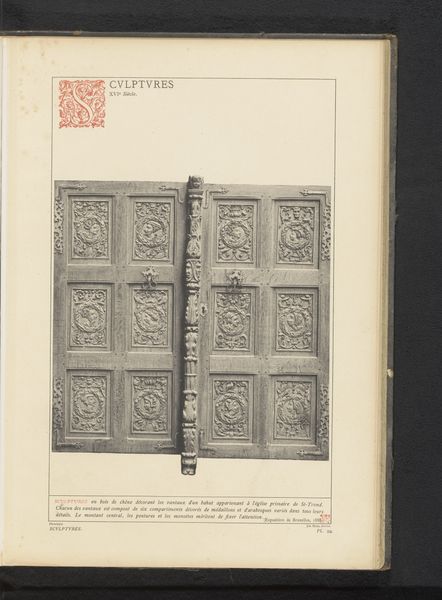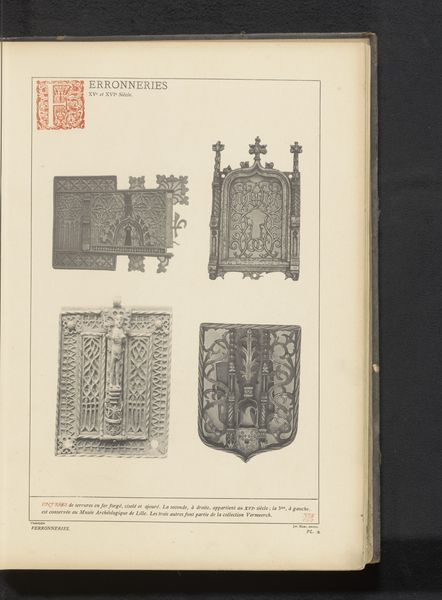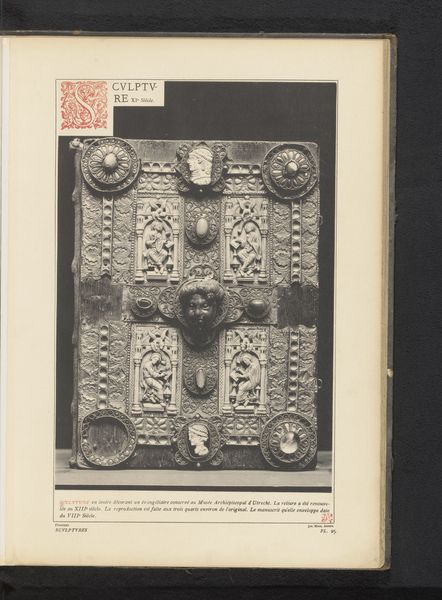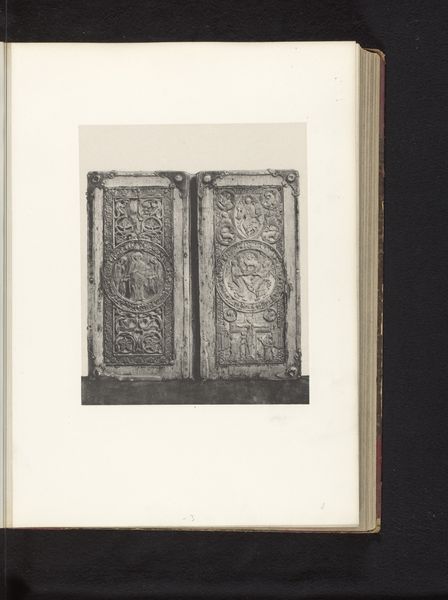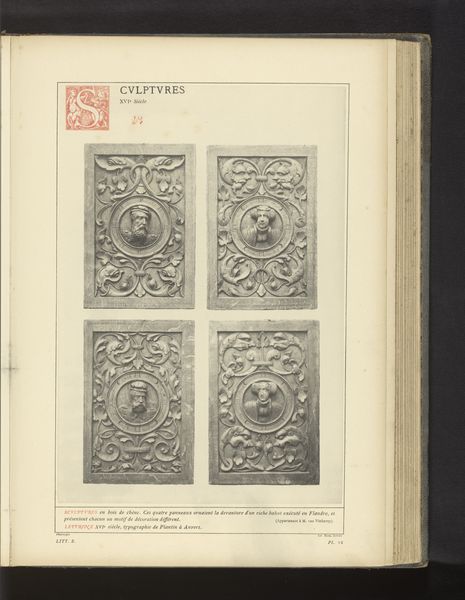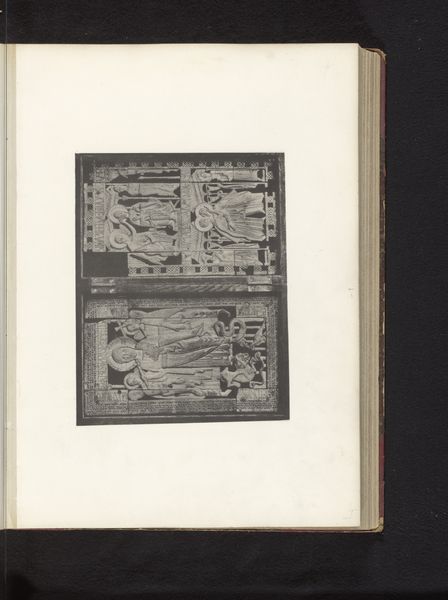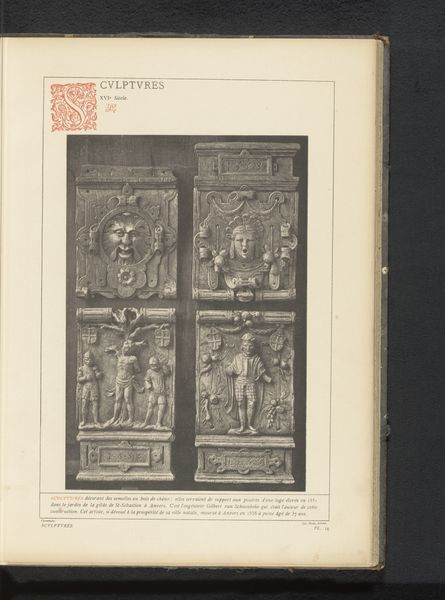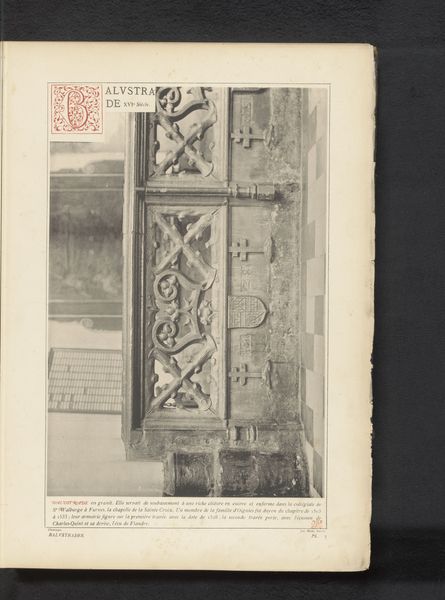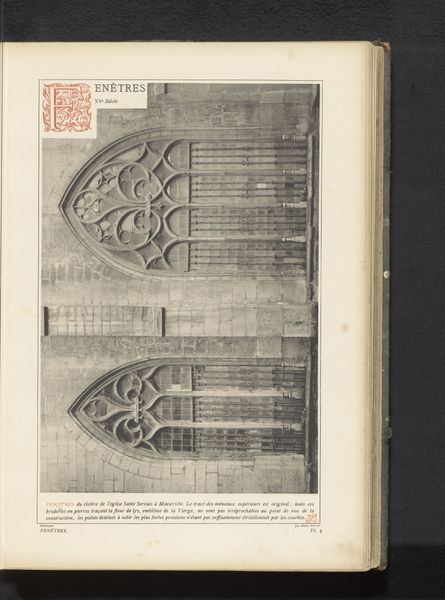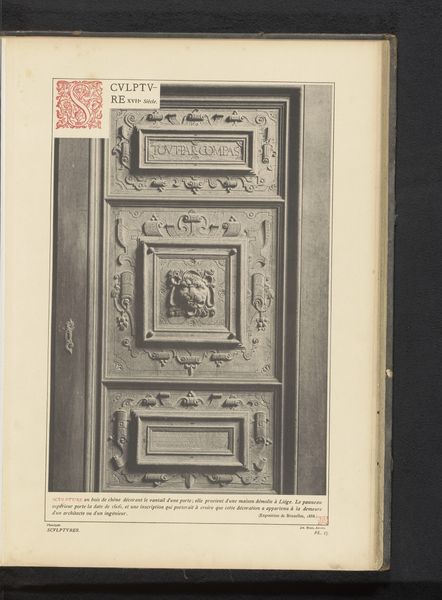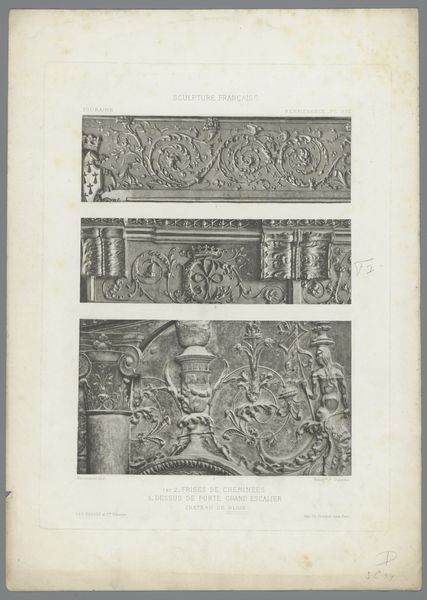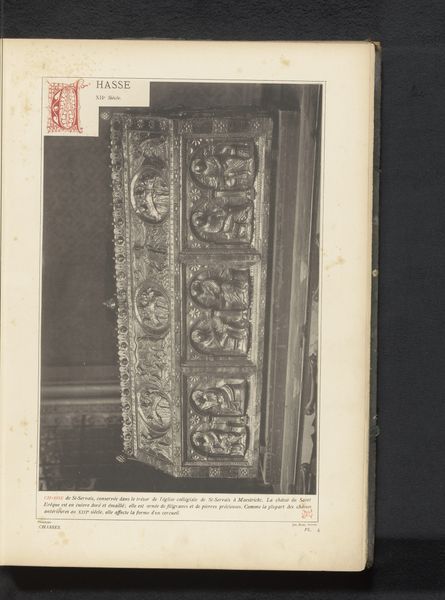
carving, relief, wood
#
medieval
#
carving
#
relief
#
geometric
#
wood
Dimensions: height 221 mm, width 312 mm
Copyright: Rijks Museum: Open Domain
Editor: These images present what seem to be two decorated oak chests, dating back to before 1887. The relief carving on each chest is quite intricate, creating a compelling textural quality, but each is patterned quite differently. I wonder what strikes you about the visual organization of the surface design of each panel? Curator: The compositions strike me first through their careful interplay of positive and negative space. Notice how the geometric and, perhaps we can say, quasi-organic, forms intertwine. We should ask ourselves how these forms are activated to establish points of both visual contrast and harmony. Do you note any repeated shapes or patterns? Editor: Well, the one on the right definitely repeats circular patterns vertically through each tier. The left uses rounded shapes, though slightly different, creating these arcs. Curator: Precisely. What effect do you see emerging from these repetitions? It strikes me as an ordered sensibility, a clear desire for a stable framework for even further adornment. We can even apply a form of semiotic analysis to appreciate the signifiers implied by each visual choice. Editor: That’s really interesting. I guess I didn’t quite appreciate the degree to which even seemingly decorative elements create such depth, and really quite profound symbolic order, to each chest’s carved façade. I suppose these chests were really never ‘just’ storage, right? Curator: Exactly. Consider too the medium of oak wood itself. The carver is not simply working 'on' this medium; they are clearly thinking 'with' its own intrinsic characteristics as part of a formal language. So while seemingly modest artifacts, these carved surfaces point towards something really substantial. Editor: Right. I am already rethinking my presumptions on applied and so-called decorative art!
Comments
No comments
Be the first to comment and join the conversation on the ultimate creative platform.
